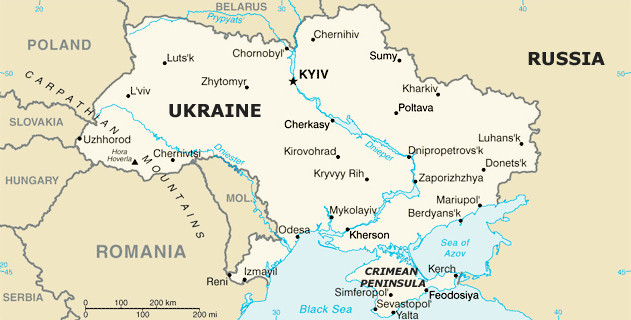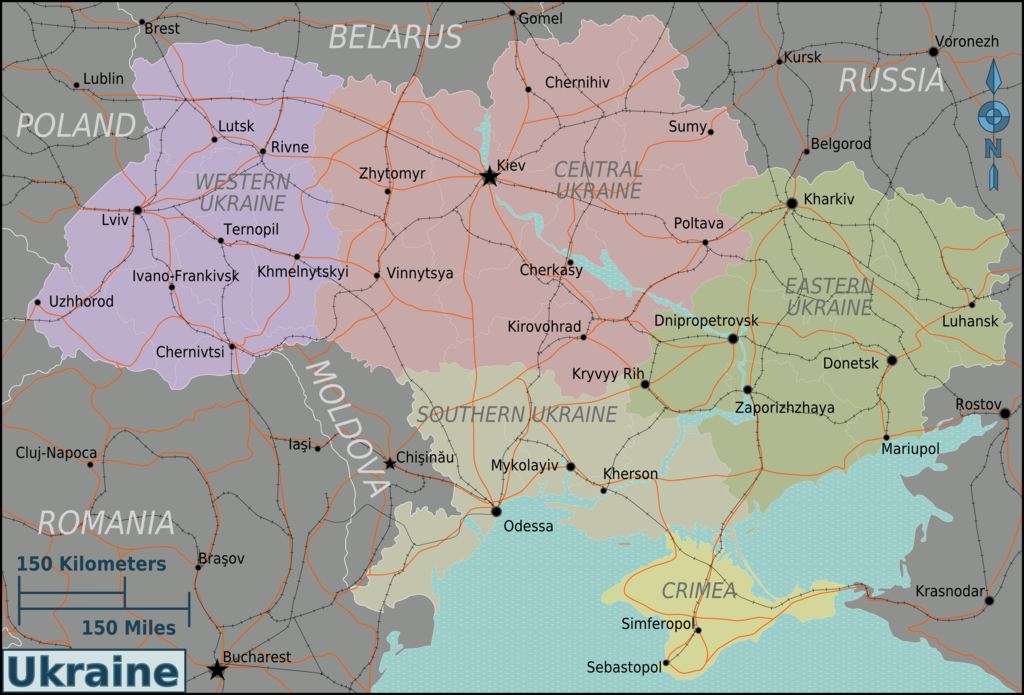Parsing the Evidence: Will Russia Invade Ukraine?

(Russia Matters – russiamatters.org – RM Staff- Jan. 27, 2022)
Among the authors, caveats abound, and rightly so. The situation on the ground is fluid and assessments are open to refinement. Military analyst Michael Kofman, who argued this week that “a large war in Europe is likely,” tweeted within 24 hours of his article’s publication: “I debate parts of it with myself every day. I hope I’m wrong and appreciate the counter arguments out there. I think we will have better clarity in a few weeks.”
This last point has been echoed by many insightful Russia watchers, including those who “see every indication” that Putin is going to use military force, like America’s No. 2 diplomat, ace negotiator Wendy Sherman. On Jan. 26, she suggested that Russia may not want to invade Ukraine until the second half of February: Doing so earlier could steal the spotlight from China during the Feb. 4-20 Olympic Games in Beijing—an affront Russian President Vladimir Putin may want to avoid vis-à-vis his powerful friend Xi Jinping.
YES, LIKELY TO LAUNCH LARGE-SCALE INVASION |
Rob Lee, Foreign Policy Research InstituteLee argues in a detailed analysis for FPRI that a ground invasion of Ukraine is likely because, over the past year or so, the Kremlin has come to see its neighbor “as a permanently hostile country” that has been increasing both its military capabilities and its defense cooperation with NATO in a way that poses long-term security risks for Russia. Moscow—unable to force Ukraine into military neutrality and to deter Kyiv, the U.S. and NATO from adopting what it sees as “anti-Russian” policies—has changed its approach “from deterrence to compellence.” In Lee’s view, Moscow’s cost-benefit analysis likely suggests that “a significant military escalation … would be less costly today than in the future if Ukraine continues to strengthen its military capabilities.” Lee describes several factors that have altered Moscow’s threat perception. One was Russia’s dashed hopes for achieving its security objectives through improved relations with President Volodymyr Zelensky, elected in 2019. A key step would have been a negotiated solution to the eight-year-old conflict in eastern Ukraine on terms favorable to Moscow. But Kyiv walked away from commitments made in 2019 and 2020 that would have strengthened the Russia-backed separatists’ political legitimacy, and last spring moved against Ukraine’s most prominent pro-Putin politician, Viktor Medvedchuk—shutting down his three TV stations and putting him under house arrest. In impassioned remarks to his Security Council, Putin suggested that Ukraine was turning, “slowly but steadily, into … an anti-Russia.” Moscow’s fears were likely heightened, too, by NATO support for Kyiv. Lee points specifically to a $2.3 billion U.K.-Ukrainian deal for the joint production of missile boats and other naval weapons, as well as strategic defense agreements with the U.S., not to mention tens of millions of dollars in U.S. military aid. Likewise, NATO member Turkey has been supplying Ukraine with combat drones that—though no match for the Russian armed forces in a large-scale war—could have proved a gamechanger in Kyiv’s fight with the separatists. Putin and other Russian officials have also rung the alarm about the prospect of long-range missiles based in Ukraine, which could reach Moscow in a matter of minutes. Russia’s previous military build-up near Ukraine in April was a shot across the bow, Lee writes. But that show of force failed to deter Ukraine’s defense modernization, NATO support for Kyiv or Zelensky’s objectionable policies. Now Moscow “may view military force as its last resort to change what it considers an unacceptable status quo.” Lee focuses more than most analysts on the particulars of Russia’s objectives, military options and military capabilities—not surprising for a former Marine infantry officer working toward a PhD in war studies. The objectives and the options are clearly linked: “The more ambitious the goal, the more force necessary to change Kyiv’s and NATO’s cost-benefit calculus.” If Russia aims to force through constitutional changes in Ukraine or a modified version of the Minsk accords, he argues, it will need a ground invasion or “heavy use of fires” that could threaten the survival of the Ukrainian state. The goal would be to impose unacceptable costs on Ukraine—destroying military units, inflicting casualties, taking prisoners of war or degrading Ukraine’s ability to defend itself—and to alter Zelensky’s incentive structure enough to induce painful concessions. For this, Lee writes, the likeliest Russian offensive option would be a land operation, mostly east of the Dnieper River, possibly including a planned withdrawal in as little as a week or two. Land around Kyiv may be occupied in a push to get Russia’s demands met. Such an operation would keep Russian troops out of cities and thus keep down the risks of civilian casualties and effective insurgency. Lee discusses less ambitious options as well, noting that they would likely be supported with hybrid means, such as cyber and electronic warfare systems. “The problem with these more limited options,” he writes, “is that they likely would not solve Russia’s primary problem: a hostile Ukraine that is increasing its conventional deterrence capabilities. So a more aggressive option is more likely.” In examining the current “posture of Russian forces,” Lee concludes that not only are they better positioned now than in the spring for a major offensive but that “the scope of this deployment of ground combat power is unprecedented for post-Soviet Russia.” Part of the troops, weapons and other materiel being moved toward Ukraine’s northern border is going to Belarus, where Russia says it will be holding joint military exercises. Significant military escalation in Ukraine, however, might not happen immediately. Like Kofman, Sherman and others, Lee mentions the Olympics: The planned drills with Belarus are set to end on Feb. 20, the same day as the closing ceremony. Additionally, equipment is still en route from Russia’s Far East. Once it arrives though, “readiness costs” will likely compel Moscow to decide whether to use force within the next few months.  |
Samuel Charap, Edward Geist et al., RAND CorporationIn a RAND report on Russian military interventions, the authors analyze 25 interventions Moscow has undertaken since 1991 in an attempt to identify their drivers, patterns and “signposts.” The report was published in September 2021, before the current build-up on Ukraine’s border Nonetheless, when its four key findings are matched against some of the evidence provided above and elsewhere, the results suggest an invasion is likelier than not.
Obviously, Ukraine is in “post-Soviet Eurasia.” Some of the threatening changes Russia perceived in its security status vis-à-vis Ukraine and NATO are described above. Other analysts, including Carnegie’s Dmitri Trenin, have pointed out that prior to Russia’s current build-up NATO had “increased the scale and frequency of its military exercises in the Black Sea area.” Moreover, in September, (around the time of the report’s publication, as it happens) Kyiv launched joint military exercises with the U.S. and other NATO countries in western Ukraine, and members of Congress called for more security assistance to Ukraine and more U.S. troops on NATO’s eastern flank in Poland, Romania and the Baltic states.
Again, the shift away from a status quo favorable to Russia is described above.
At the 2008 Bucharest summit, NATO committed to accepting both Ukraine and Georgia as members in some unspecified future—a move vehemently lobbied for by President George W. Bush. Two months before the summit, William Burns—then the U.S. ambassador to Russia, now head of the CIA—urged the administration to reconsider, writing in a memo declassified a decade later that, if Washington pushes for this, “Russia will respond. The prospect of subsequent Russian-Georgian armed conflict would be high. … It will create fertile soil for Russian meddling in Crimea and eastern Ukraine.”
|
NO, NOT LIKELY TO LAUNCH LARGE-SCALE INVASION YET |
Simon Saradzhyan, Russia MattersLike the RAND team, Saradzhyan has analyzed cases of Russian military intervention, but only under Vladimir Putin. In an Orbis article out this month—the culmination of his multi-year effort to ascertain what conditions are necessary and sufficient for Putin’s Russia to intervene (or not)—he considers seven cases when Putin likely had to decide whether to send in troops. In three, the Russian commander-in-chief ultimately decided to intervene; in four, he opted not to. Saradzhyan likewise considers seven potential drivers influencing these decisions. Of the seven, Saradzhyan identifies three conditions that all had to be present for Putin to authorize military action abroad:
Back in November, in an article for Russia Matters called “Why There Won’t Be a People’s Republic of Left-Bank Ukraine Just Yet,” Saradzhyan applied his thinking directly to the latest build-up near Ukraine. At the moment of writing, Saradzhyan concluded that the first condition, the perception of an acute threat, already existed; the second condition—a reasonable hope that military intervention would achieve its goals—was materializing; and the third condition, the exhaustion of non-military options, was absent. In greater detail:
|
Eugene Chausovsky, Newlines InstituteLike Saradzhyan, Chausovsky, writing in Foreign Policy, has studied Russia’s record of past military interventions and interprets it as showing that an invasion, in late December at any rate, was unlikely. “Russia’s use of military force in the Putin era,” he writes, “while often appearing aggressive and erratic, is actually rather conservative and risk-averse, with a strong cost-benefit analysis taken by the Kremlin in each particular case.” Chausovsky identifies five variables underpinning Russia’s strategic framework for such calculations: 1. a trigger; 2. local support; 3. anticipated military reaction; 4. technical feasibility; and 5. relatively low anticipated political and economic costs. “If any one of these conditions is insufficient or nonexistent,” he argues, “then Russia is unlikely to intervene militarily, even within the former Soviet space. If all these factors are present, there is a much higher likelihood for a Russian military intervention. And if Russia gambles wrong, it pays a very high cost.” In examining the five variables vis-à-vis Ukraine, Chausovsky contrasts the current build-up with Russia’s interventions of 2014-2015:
The other three variables—anticipated military reaction, technical feasibility and relatively low anticipated costs—seem to bleed into each other in Chausovsky’s analysis, due in large part to the much greater support Ukraine now has from the West, including the military aid mentioned by Lee. Hence, low local support for Russia in Ukraine and significant NATO support for Kyiv drive up the “economic, political and potentially military costs for Russia” considerably. Moreover, Chausovsky warns, a decision to invade “could backfire and push Ukraine even closer into NATO, violating one of Russia’s core imperatives.” |
Article also appeared at russiamatters.org/analysis/parsing-evidence-will-russia-invade-ukraine, with different images, bearing the notice: “© Russia Matters 2018 … This project has been made possible with support from Carnegie Corporation of New York,” with a footer heading entitled “Republication Guidelines” linking to: russiamatters.org/node/7406, which bears the notice, in part:
“If you would like to reprint one of these articles, a blog post written by RM staff, one of our infographics or a fact-check, we ask that you follow these guidelines:
- Include a prominent attribution to Russia Matters as the source and link back to the original at RussiaMatters.org.
- Retain the hyperlinks used in the original content.
- Do not change the meaning of the article in any way.
- Get an ok from us for non-substantive changes like partial reprints or headline rewrites and inform readers of any such modifications (e.g., This article first appeared on the Russia Matters website with the headline “Russian Election Interference in Trump’s Own Words”).
- Let us know about the reprint and send a link!
Please note that Russia Matters cannot grant permissions for third-party content, including articles, photographs and other materials not produced by our team.
Questions? Email us at RussiaMatters@hks.harvard.edu.”
